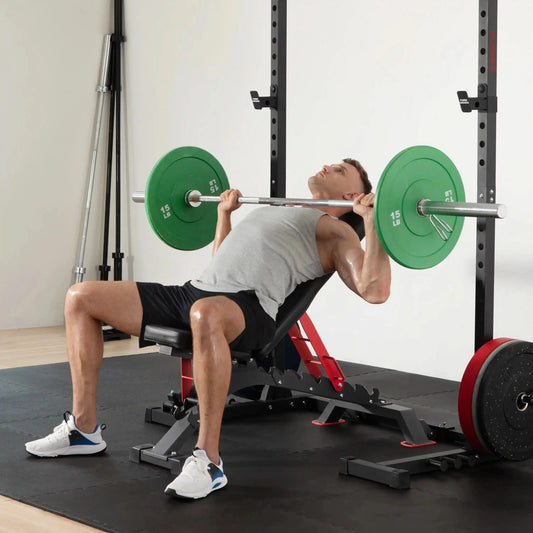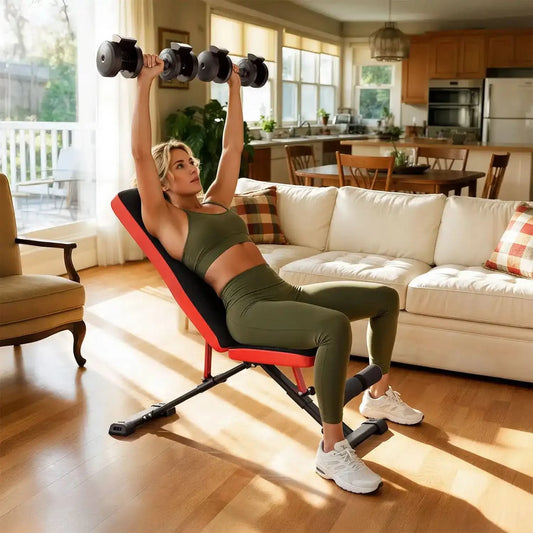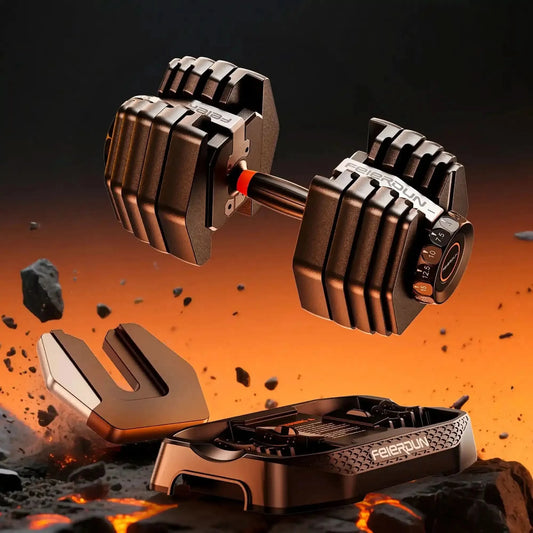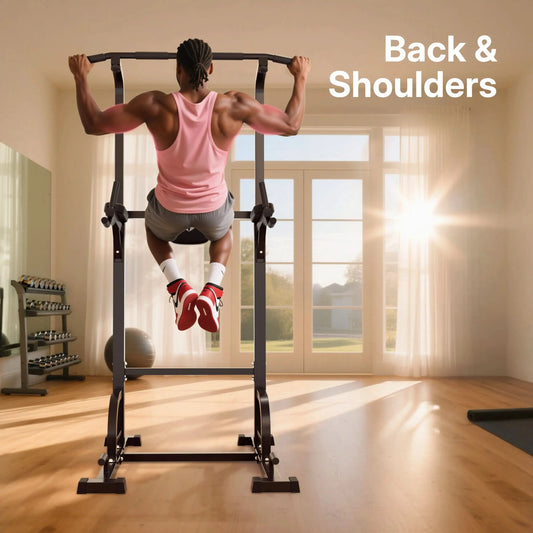Walk into any gym and you’ll see a line of shiny steel bars stacked on a rack. They look alike, but here’s the catch: not every barbell bar weighs the same. Some are built for Olympic lifts. Some are built for powerlifting. Others are made to make training easier or harder, depending on your goals.
A lot of lifters get tripped up here. They grab a bar, throw plates on, and think it’s 45 pounds. But that’s not always the case. Bars range in weight from 15 to more than 70 pounds, depending on the kind. If you use the incorrect one, it can affect your lifts, your stats, and possibly your chance of injury.
So, knowing the barbell bar weight is more than trivia. It’s part of training correctly.
In this guide, we’ll break it all down. We’ll cover Olympic bars, powerlifting bars, multipurpose bars, and specialty options you might see in gyms. By the end, you’ll know exactly what each bar is for and how much it weighs.
The Basics of Barbell Bars
The steel bar used to hold weight plates is called a barbell bar. A barbell bar consists of the shaft and the sleeves, and it’s a staple in nearly every gym.
Most people are familiar with the Olympic barbell, which typically weighs 20 kilograms (approximately 44 pounds). However, not all bars are created equal. The sport, its intended usage, and its target audience all influence weight and size.
Most gyms will tell you “the bar weighs 45 pounds,” but that only applies to a standard men’s Olympic bar. There are plenty of other barbells with different weights and designs, and knowing the difference makes a big impact on your training.
Having said that, let’s go through the different barbell types and see how much they weigh.
Some manufacturers label barbell weights in kilograms, while others prefer pounds. If you’re used to pounds but the barbell is marked in kilograms, you can convert it:
1 pound (lb) = 0.45359237 kilograms (kg).
Standard Olympic Barbells
When most people talk about an “Olympic barbell,” they’re referring to either the men’s or women’s version. Both are made to the official standards set by the IWF. These bars are what you see in weightlifting competitions and are built to handle fast, heavy lifts. What sets them apart is their mix of strength, flexibility, and smooth sleeve rotation.
Unlike cheaper gym bars, they’re designed to take repeated drops from overhead without bending out of shape. Olympic bars also give lifters a consistent feel, so training in the gym feels the same as stepping onto the competition platform.
Men’s Olympic Barbell
-
Weight: 20 kg (44 lbs)
-
Length: 2.2 meters (about 7.2 feet)
-
Shaft Diameter: 28 mm
- Designed for explosive lifts like snatch and clean & jerk.
- Sleeves usually rotate with needle bearings to reduce wrist and elbow stress.
The men’s Olympic bar is the one most lifters see in commercial gyms. Its whip (flexibility under load) makes it ideal for dynamic Olympic movements.
Women’s Olympic Barbell
-
Weight: 15 kg (33 lbs)
-
Length: 2.01 meters (about 6.6 feet)
-
Shaft Diameter: 25 mm (slimmer grip for smaller hands)
- Similar sleeve rotation and design as men’s bars.
The lighter weight isn’t just about strength differences. It also allows female athletes to train with bars scaled to their body size while maintaining competition standards.
Powerlifting Bars
Powerlifting bars are built differently from Olympic bars. They are stiffer, heavier, and made to handle maximum loads. The IPF sets standards for these.
Unlike Olympic bars that are designed to flex and move with explosive lifts, powerlifting bars are all about control and stability. They’re made to support the heaviest squats, benches, and deadlifts without bending too much under pressure. The knurling is sharper for a firm grip, and most have a center knurl so the bar won’t slide during back squats.
If you’ve ever felt an Olympic bar bounce or whip during heavy lifts, you’ll notice right away that a power bar feels steadier in your hands.
Below, we’ll look at the different types of powerlifting bars and how each one is designed for a specific lift.
Standard Power Bar
This bar is designed for the “big three” lifts: squat, bench press, and deadlift. Its stiffness keeps the bar stable under heavy loads.
-
Weight: 20 kg (44 lbs)
-
Shaft Diameter: 29 mm (thicker, less whip)
- Aggressive knurling for a stronger grip.
- Center knurl for back squat stability.
Squat Bar
The squat bar is rare in commercial gyms but common in serious powerlifting gyms. The added thickness makes it more rigid and helps balance very heavy squats.
-
Weight: 25 kg (55 lbs)
- Longer than a standard bar, often 2.4 meters.
- Extra-thick shaft (30–32 mm).
- Aggressive center knurling for grip on the back.

Deadlift Bar
This bar flexes under heavy load, letting lifters pull more weight from the floor before the plates leave the ground. That small difference is huge in competition.
-
Weight: 20 kg (44 lbs)
- Slightly longer shaft for extra whip.
- Thinner diameter (27 mm) for easier grip.
- No center knurl.

Bench Press Bar
Not all federations use a separate bench bar, but some gyms and meets have them. They give lifters more stability for heavy pressing.
-
Weight: Usually 20–25 kg (44–55 lbs)
- Slightly thicker with less whip.
- Wide grip markings.
Multi-Purpose Training Bars
Multipurpose bars, often called “cross-training bars” or “hybrid bars,” are the middle ground between Olympic and powerlifting designs. They’re built for general strength training.
They’re versatile, but they don’t match the performance of competition-standard bars. Great for beginners or people who want one bar for everything.
-
Weight: 15–20 kg (33–44 lbs)
- Moderate knurling, usually no center knurl.
- Dual grip marks for both Olympic and powerlifting styles.
- Used in CrossFit gyms, fitness centers, and home setups.
Specialty Barbells
Specialty bars are designed to target specific lifts or reduce strain. Their weights vary a lot. They don’t always follow competition standards and often weigh more or less than 20 kg.
Some popular examples include:
Safety Squat Bar
-
Weight: 20–32 kg (44–70 lbs)
- Padded yoke rests on shoulders.
- Handles point forward for easier grip.
- Helps lifters with shoulder mobility issues.

Trap Bar (Hex Bar)
-
Weight: 20-30kg(45-65lbs), depending on design.
- The hexagon shape lets lifters step inside.
- Used for deadlifts and shrugs with a neutral grip.
- Reduces stress on the lower back.
Cambered Bar
-
Weight: 12-32kg(25-70lbs)
- Lowered shaft shifts the weight distribution.
- Forces more stabilization during squats or bench.
Swiss Bar (Football Bar)
-
Weight: 12-30kg(25-65lbs)
- Multiple neutral grip handles.
- Common for bench press, overhead press, and tricep work.
Technique Bars
-
Weight: 5–15 kg (11–33 lbs)
- Made from aluminum or light steel.
- Designed for beginners to practice lifts safely.
Why do Barbell Bars Have Different Weights?
Barbells come in different weights, depending on their construction and intended use. The weight of similar barbells can also vary between brands.
Sport Standards
Olympic lifting and powerlifting don’t use the same rules. Each sport has its own bar size and weight standards, which is why an Olympic bar feels different from a power bar.
Bar Length and Shaft Thickness
When a bar is longer or thicker, it uses more steel and ends up heavier. Men’s bars are typically a bit longer and thicker than women’s bars.
Knurling and Sleeve Design
The grip pattern (knurling) and how sleeves are built can add extra material. Sleeves that are made with smooth rotation systems (like in Olympic bars) often weigh a bit more.
Purpose of the Bar
Training bars, specialty bars, and competition bars are all made with different goals in mind. A beginner-friendly training bar will often weigh less, while a competition bar is built to regulation standards.
Material Quality and Finish
Some bars are made from higher-grade steel or come with special coatings like chrome, zinc, or cerakote. These don’t just affect durability and grip, but also add slight differences in overall weight.
Tips for Identifying Barbell Bar Weight in the Gym
Not all bars in the gym are marked, but these quick checks can help:
-
End caps – Many bars list the weight on the sleeve ends.
-
Length – Men’s Olympic bars are about 2.2 m; women’s are shorter at 2.01 m.
-
Knurling – A center knurl usually means it’s a power bar.
-
Whip – Flexible bars are often Olympic or deadlift bars.
-
Sleeve diameter – Thicker sleeves often point to power bars, while thinner, smooth-rotating sleeves are common in Olympic bars.
Takeaway
So, not all barbell bars are the same.
What many people call a “20 kg bar” could actually be a 15 kg training bar, a 25 kg squat bar, or even a 70 lb specialty bar built for one purpose. The details matter.
Knowing what bar you’re holding keeps your numbers honest. It makes your progress more accurate. And it keeps your training aligned with your goals.
The right bar is not just about weight. It’s about training with purpose, choosing the right tool, and building confidence every time you lift.



















